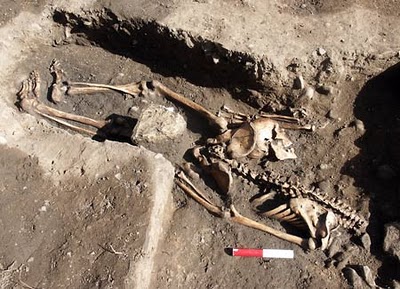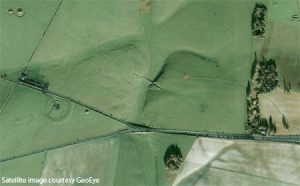 In an interview for Toronto-based ‘The Agenda’, journalist Steve Paikin questioned Dimitrios Pandermalis, president of the New Acropolis Museum in Athens, on why Greece believes the famous Elgin Marbles should be returned to their homeland. And if the British Museum were to return the marbles would it not set a precedent for a myriad other claims for reparation, from all over the world?Pandermalis sees the return of the Parthenon Marbles not as a ‘repatriation’ of artefacts, but rather as re-unification, reinstating the ancient monument’s integrity.
In an interview for Toronto-based ‘The Agenda’, journalist Steve Paikin questioned Dimitrios Pandermalis, president of the New Acropolis Museum in Athens, on why Greece believes the famous Elgin Marbles should be returned to their homeland. And if the British Museum were to return the marbles would it not set a precedent for a myriad other claims for reparation, from all over the world?Pandermalis sees the return of the Parthenon Marbles not as a ‘repatriation’ of artefacts, but rather as re-unification, reinstating the ancient monument’s integrity.
Pandermalis is right to say that the Parthenon sculptures and friezes do not belong to Britain. Neither do they belong to Greece. The decapitated marble body in Greece, its head in Britain, are part of a larger construction, a symbol of a great ancient culture and ‘the first democracy’. That symbol is world heritage. But opposed to the Rosetta Stone‘s orNefertiti’s repatriation, a ‘reunification’ of the Parthenon Marbles, would put the pieces in the context they are now so severely lacking. I think these statues belong to the world community, says Pandermalis.
Even if we agree that neither Greece nor Britain has ethical ‘ownership’ over the marbles, where should they be? The sculptures belong to the monuments from which they derive, says Pandermalis abruptly.
Video: Dimitrios Pandermalis on TVO’s ‘The Agenda’
Les excuses sont faites pour s’en servir
Already in the early19th century, when the Parthenon Marbles first arrived on British soil, it was heavily debated whether bringing themto Britain was the right thing to do. In Elgin’s defence it is oftenarguedhe ‘saved’ the marbles from an Ottoman government that did not care. At the start of WWII, when the Greek government officially started demanding their marbles back, they were told: You’ll get them when the war is over. Until then, we’ll keep them safe. When the war had ended, and peace returned to Europe, it was: You’ll get them when you have a decent place to house them. Until then, we’ll keep them safe.
Fast forward to today, and the Greek government cares about its cultural heritage. The war is over. A splendid New Acropolis museum has been constructed (interview with architect Bernard Tschumi).We have the technology and logistics to safely transport invaluable artefacts from one country to another. What other excuse can Britain still think of?
We have our museum and they appreciate it but now it is another discussion: what practically is a metropolitan museum around the world? These major museums are in a sense encyclopedic museums, so they need to have important pieces from around the world. To present world history, to make comparisons between Japan, Africa, Athens, and so on. It is another concept, explained Pandermalis.
Video from the NAM:Moving Marbles isn’t that tricky…
Footage from the New Acropolis Museum and the ‘moving day’, from the TVO website. A subtle message to the British Museum that it is definitely not impossible to safely move the marbles?

Will the New Acropolis Museum ever house the Elgin Marbles?
NowAthens has the NAM(and possibly, if the British Government is keeping this silent, the clock of Big Ben) what will be the country’s next move?
Cleverly Pandermalis points out that most north European and American museums nowadays have difficulties acquiring new pieces, because illicit trade is not so easy as it was, it is criminal today. They, and of course, the British Museum, should keep in mind that their best chances of getting more new pieces to add to their ‘Ancient Greece’ collection is to have a good relationship with the country.
The arguments Dr Pandermalis presents in this interview are very moderated and well-thought out, making the interview a pleasure to watch.
No major wish-list for Greece (although they could easily compile one). No threats of suspended excavations. An offer of mutual respect and of collaboration. It seems that Greece does truly just want its marbles back? And shouldn’t the British Museum send them back, and in turn, for the next 200 years, get to display the reconstructions now at the NAM?



